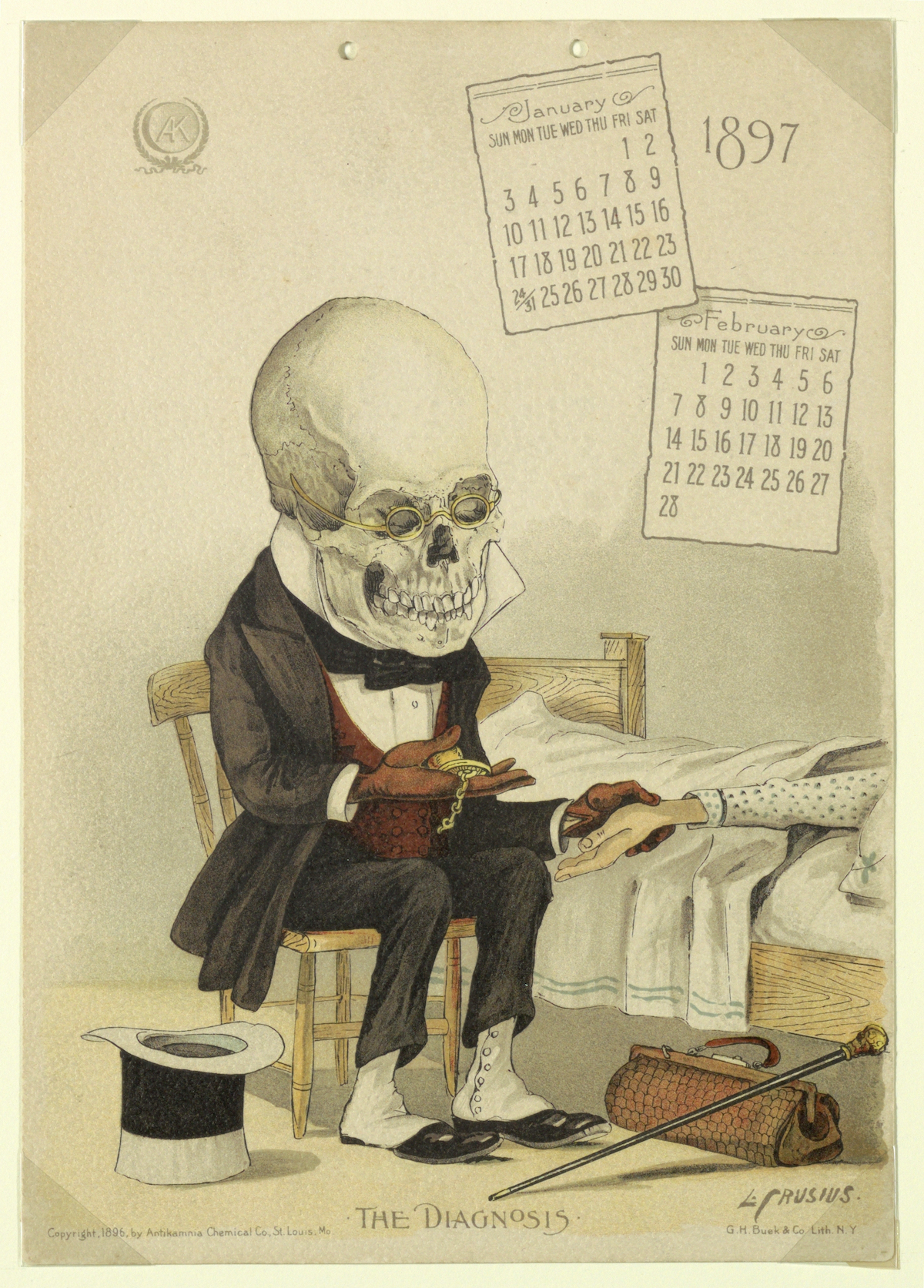
Using memento mori to sell medical treatments designed to hold off death was the idea of the Antikamnia Chemical Company, which featured skeletons employed in various professions in adverts for its drugs.
The St. Louis-based company founded by Frank A. Ruf and Louis E. Frost featured the ambulatory skeletons on its calendars for the years 1897 to 1901, mailing them to physicians around the country.
The illustrations, watercolour “skeleton sketches”, were created by Louis Crusius (1862-1898), a doctor and artist based in the city.
As the skeletons advised, the pills were a “certain remedy, unattended by any danger”. Pop enough of them and you’d be free of worries and pain, because you’d be dead. They contained acetanilide, a synthetic organic compound introduced in therapy in 1886 as a fever-reducing drug. However, excessive or prolonged use damaged the function of haemoglobin, the oxygen-carrying pigment of the blood, possibly leading to cyanosis, when your skin or lips turn a bluish-purple hue.
After the US Pure Food and Drug Act of 1906 was passed, which required labels to indicate dangerous drugs, Antikamnia substituted acetanilid with the less toxic derivative acetphentidin. But in 1914, after a lengthy legal battle, regulation made the company state that acetphentidin was a derivative of acetanilid.
The end was nigh. In 1930, the company was bought up by Block Drug Company in 1930.
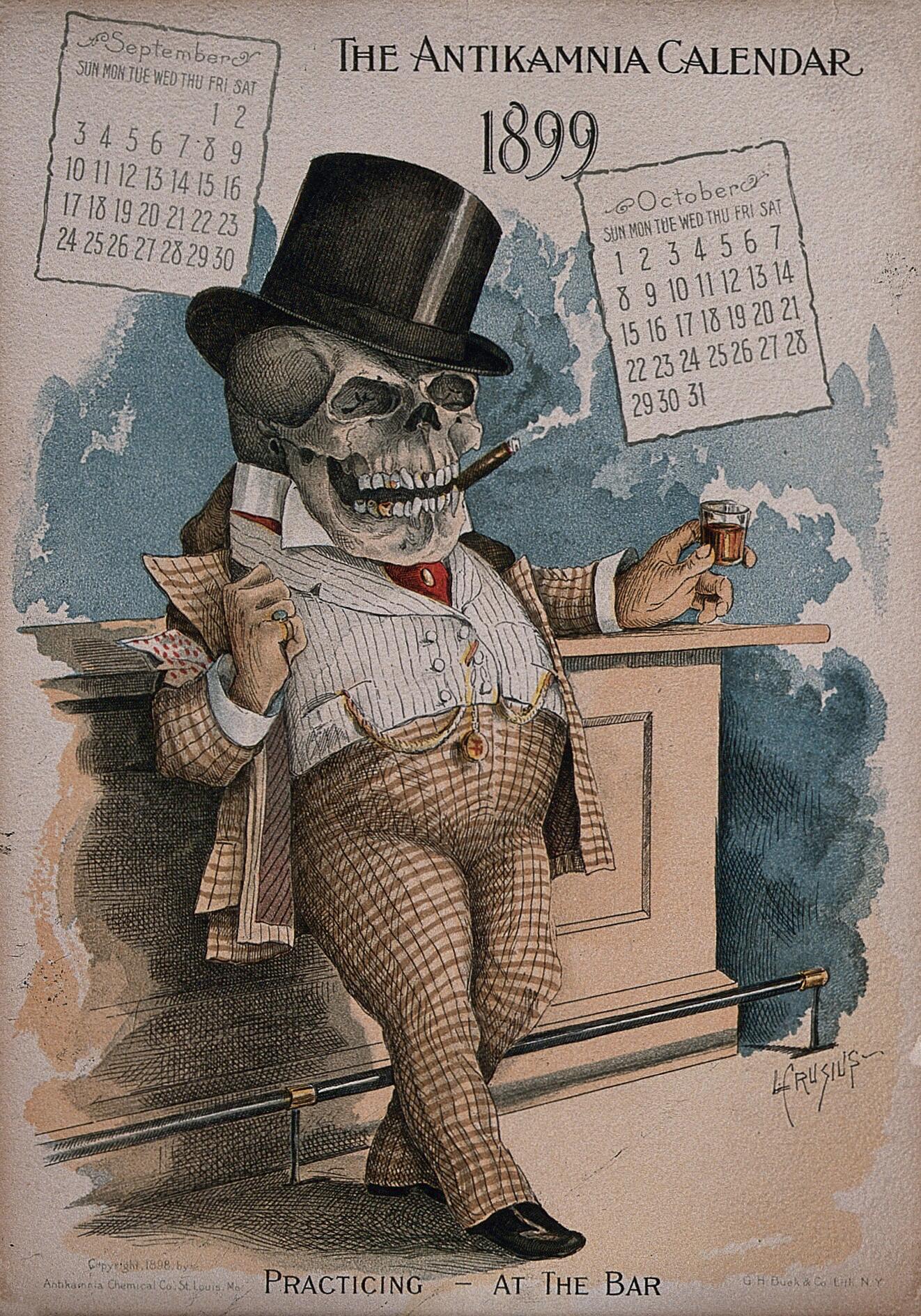

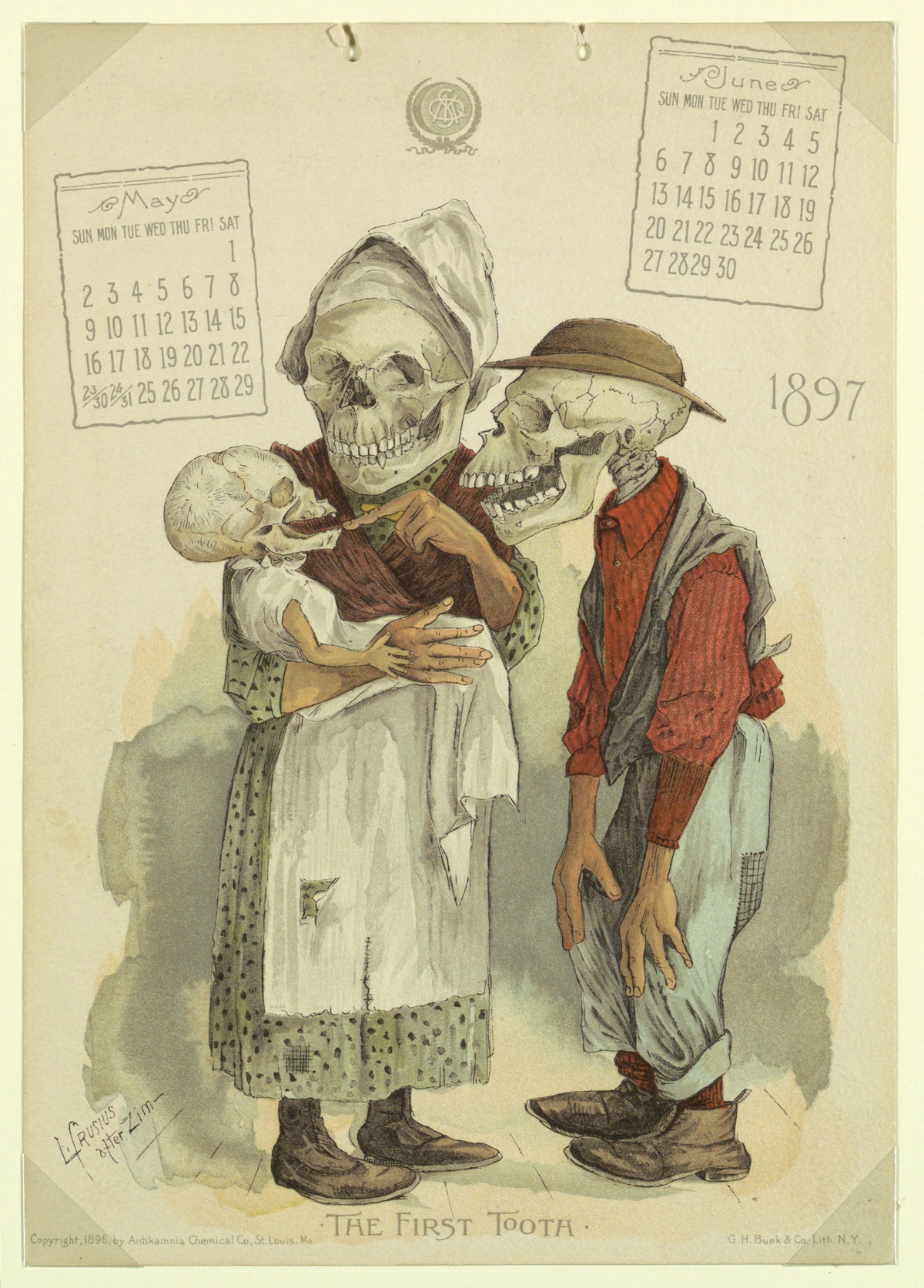
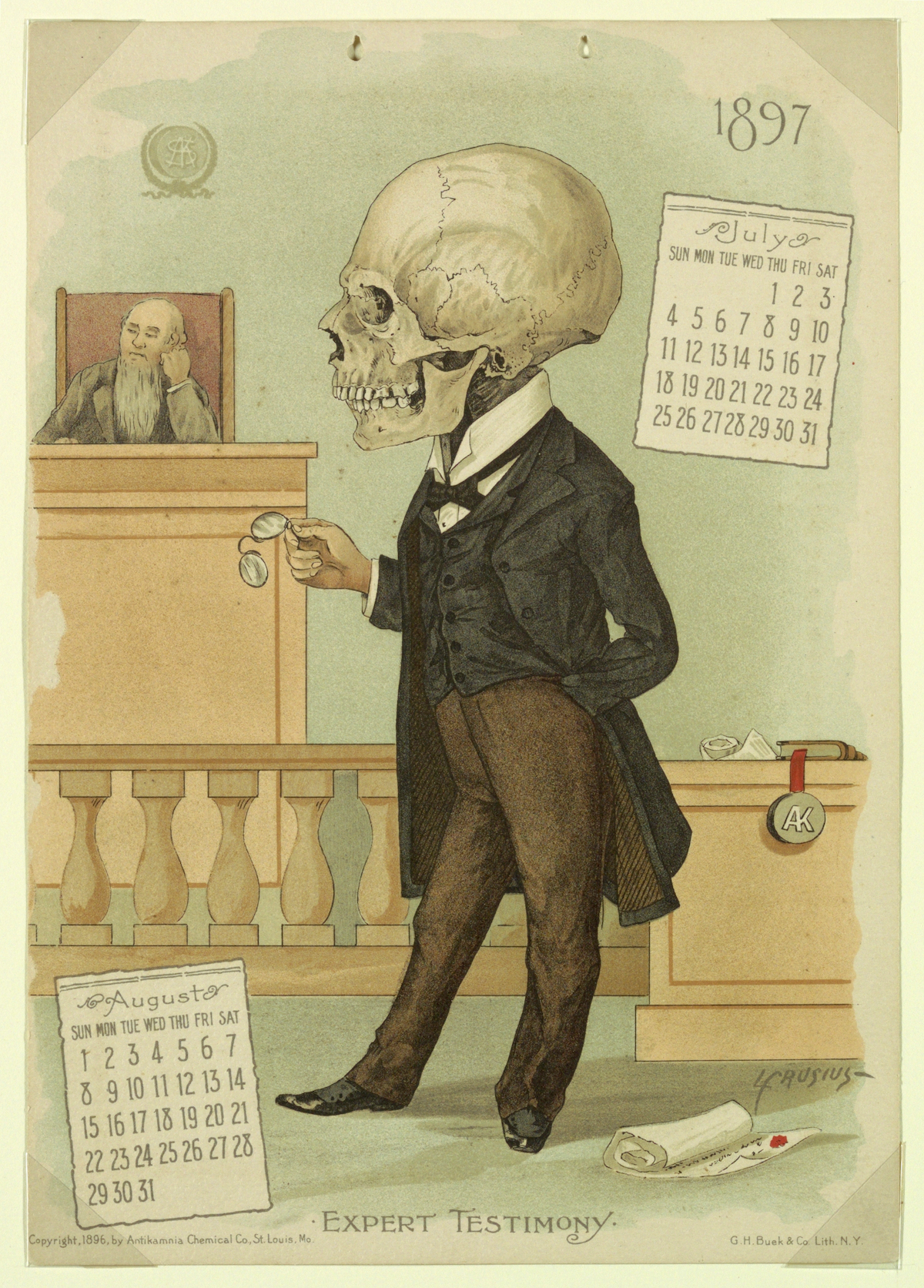

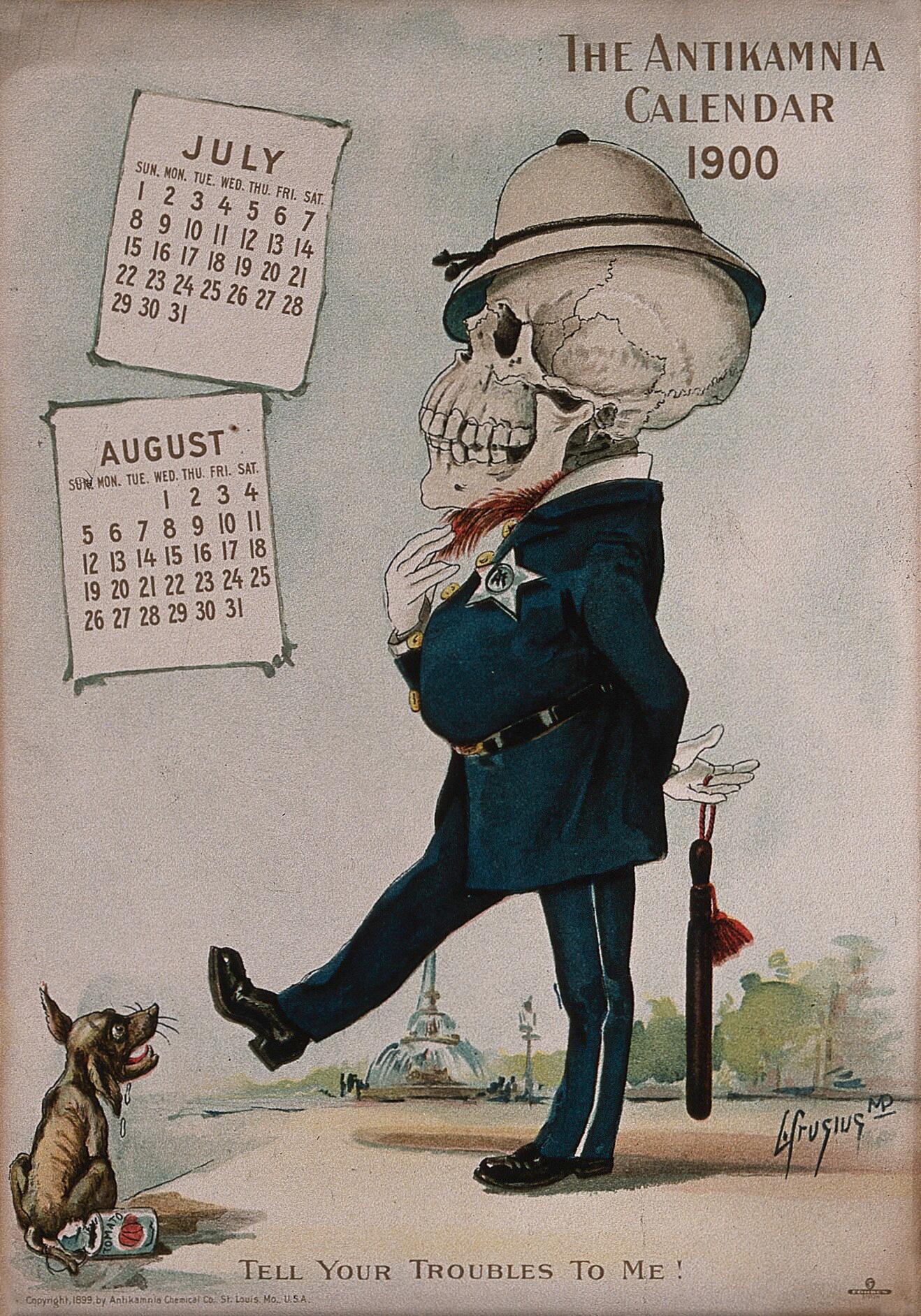
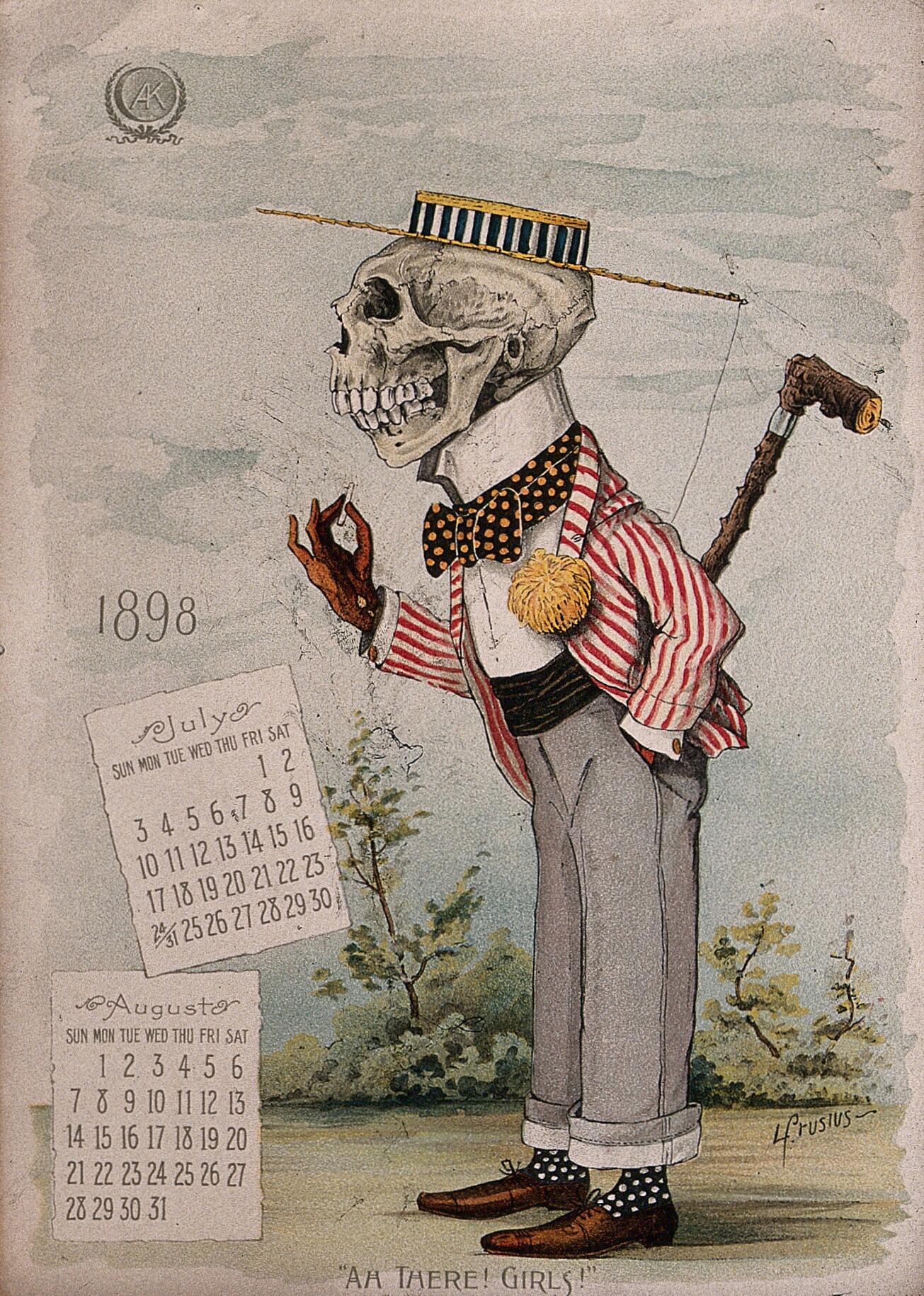
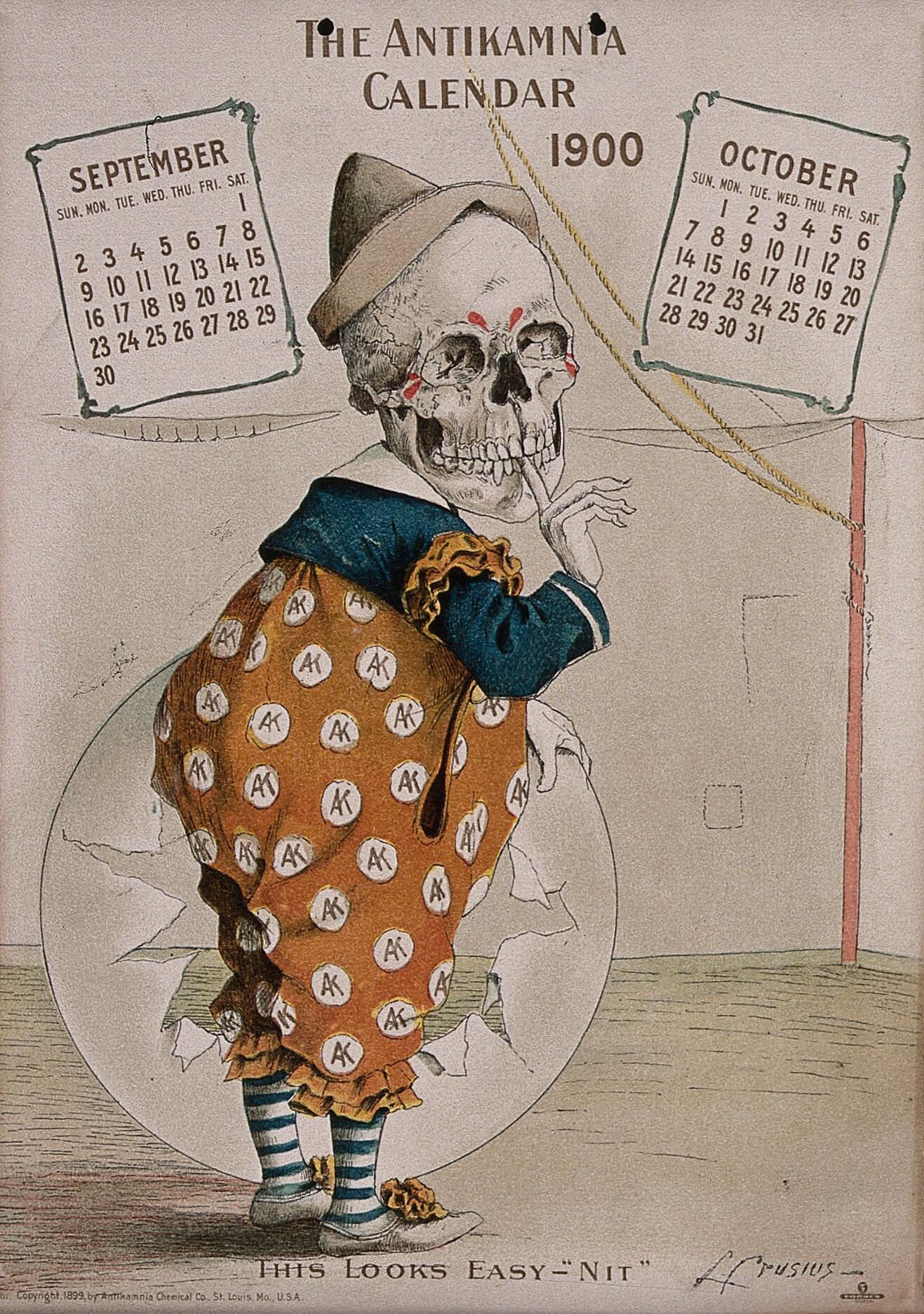
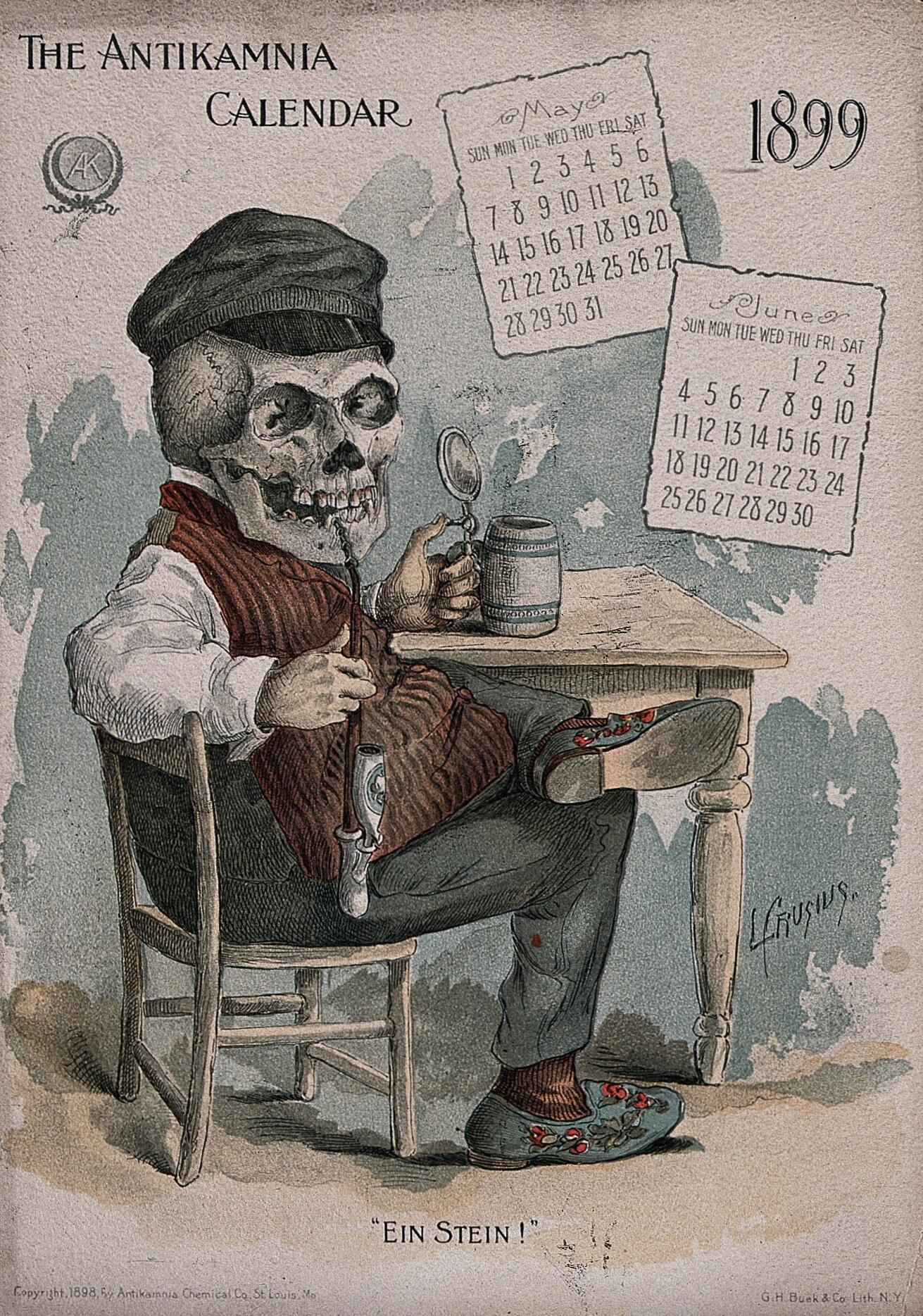
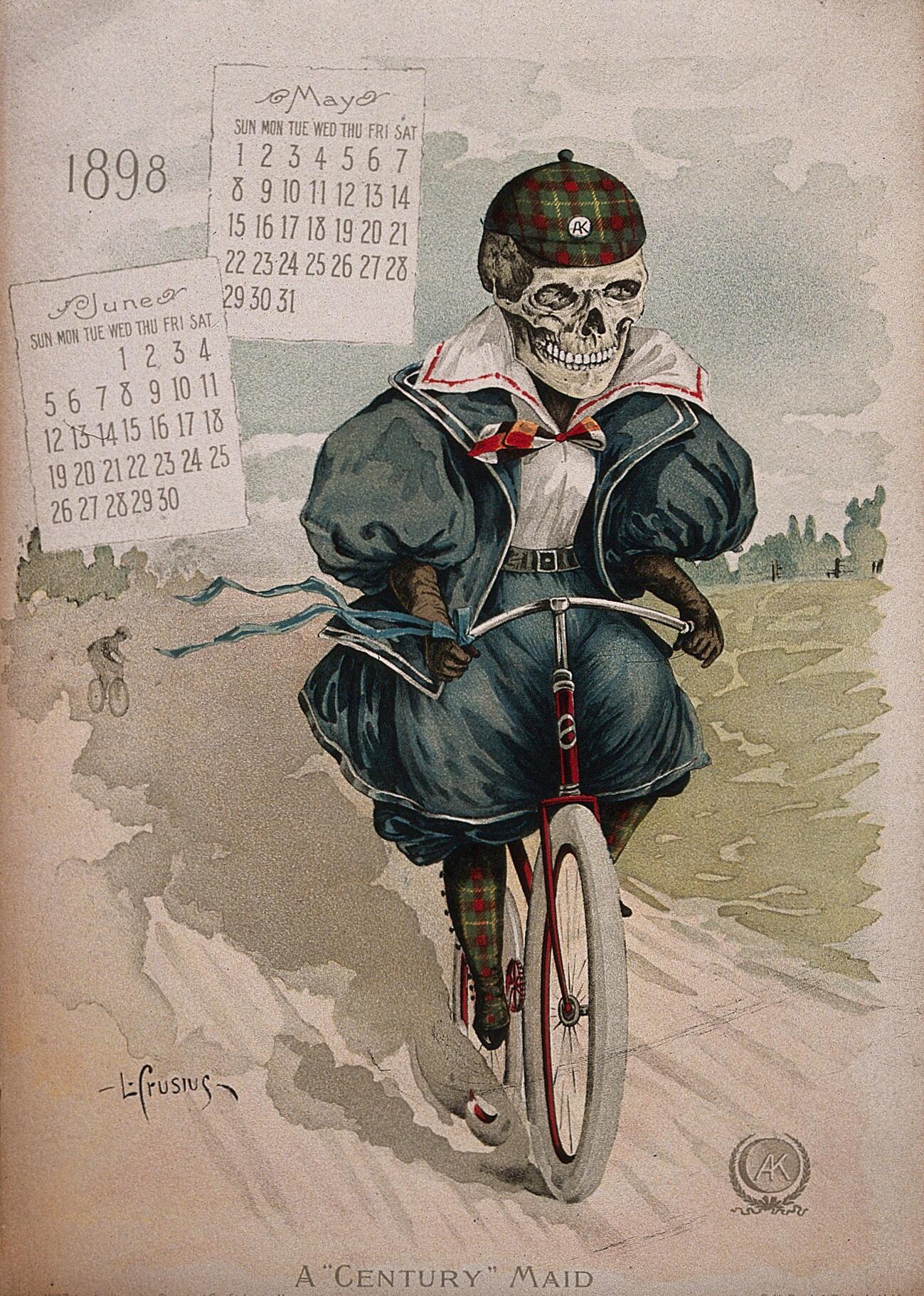

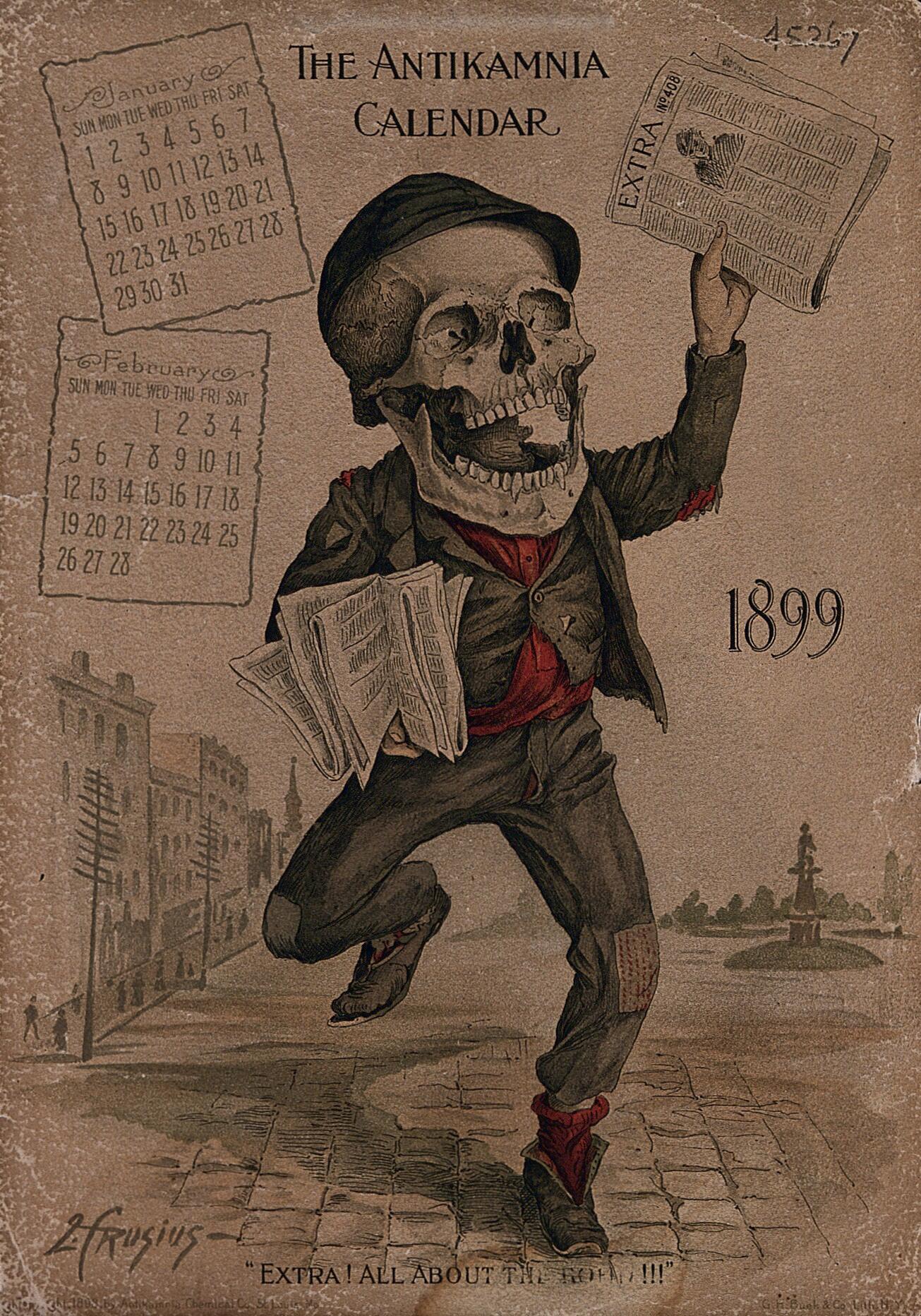
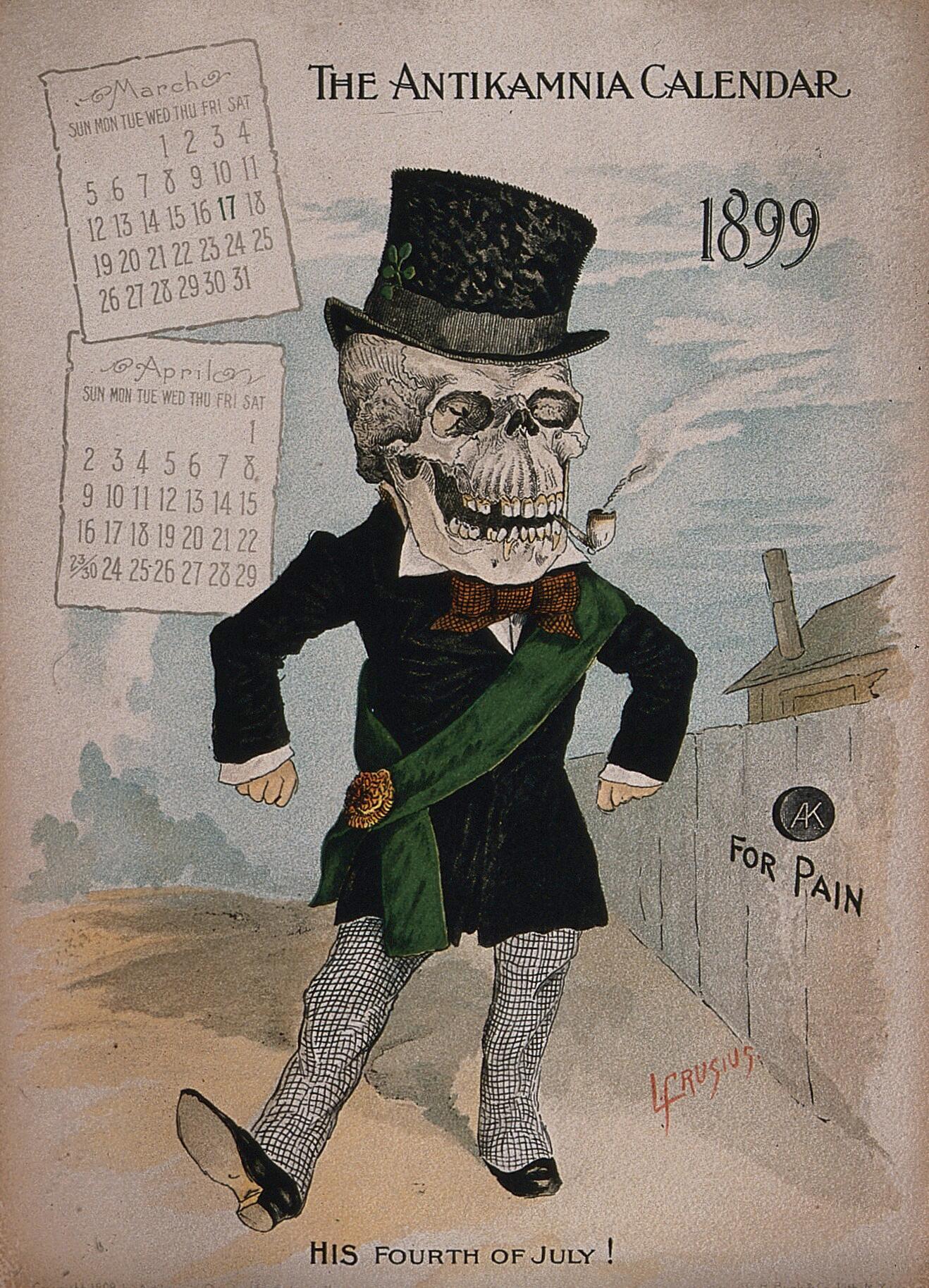
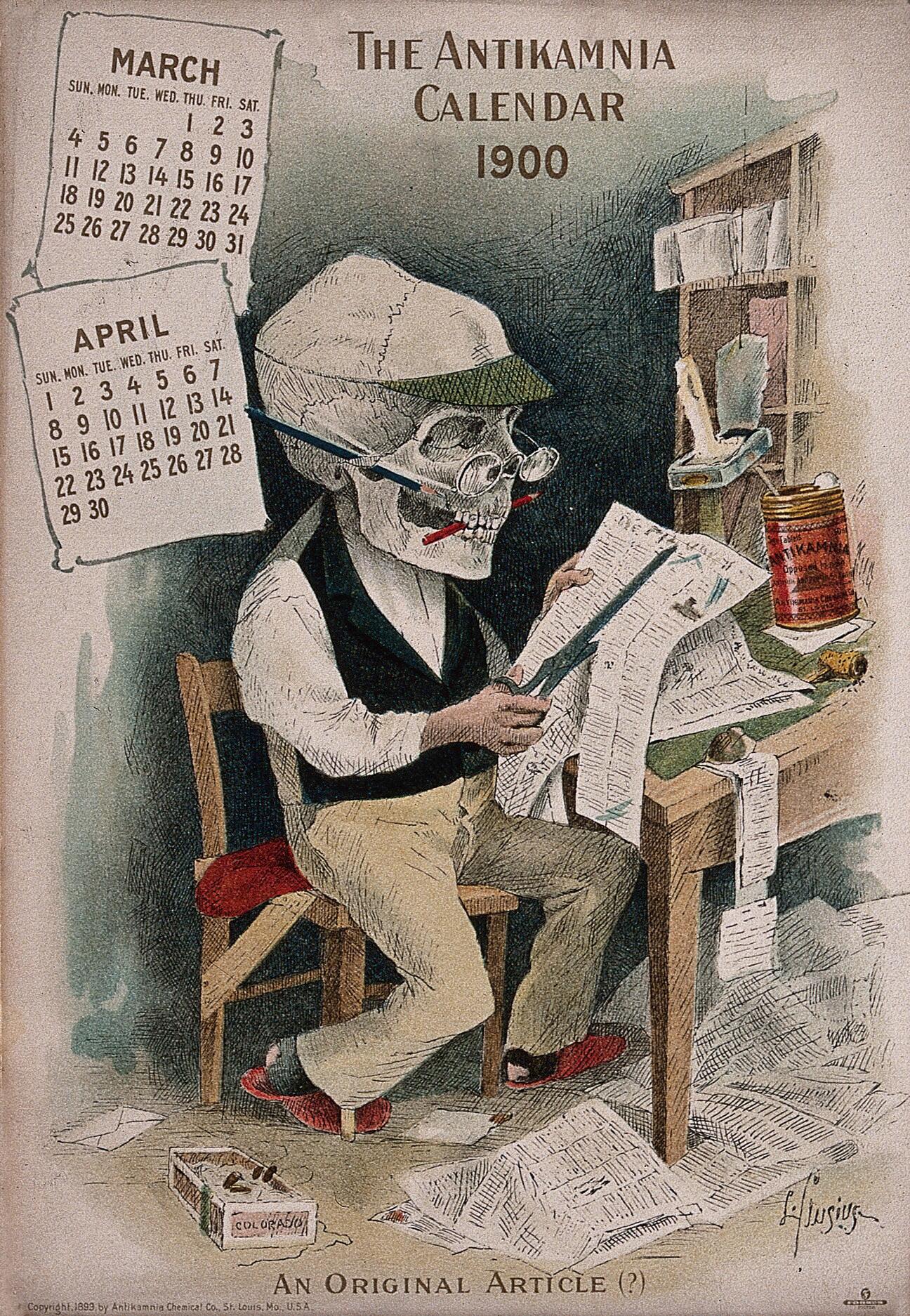
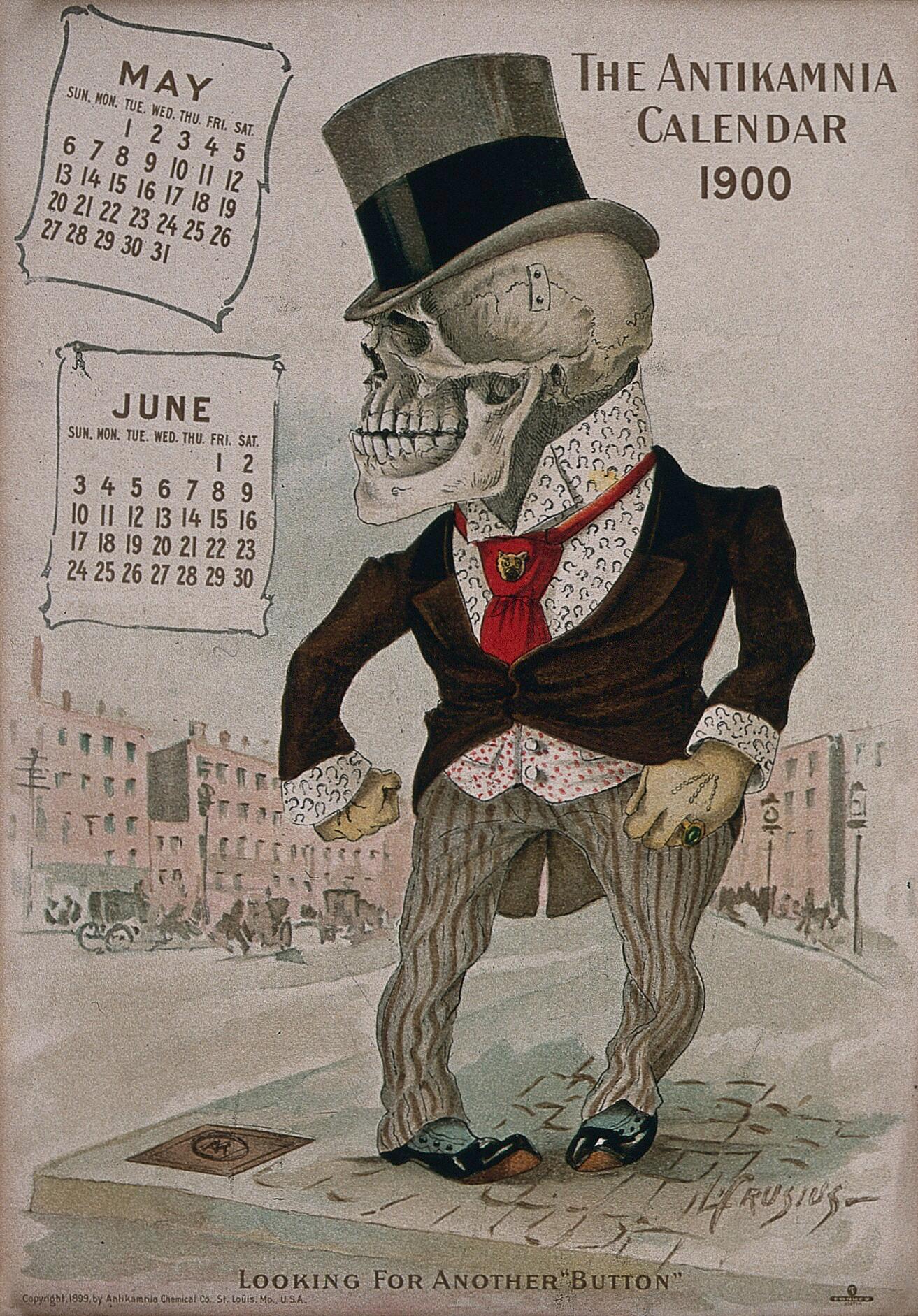
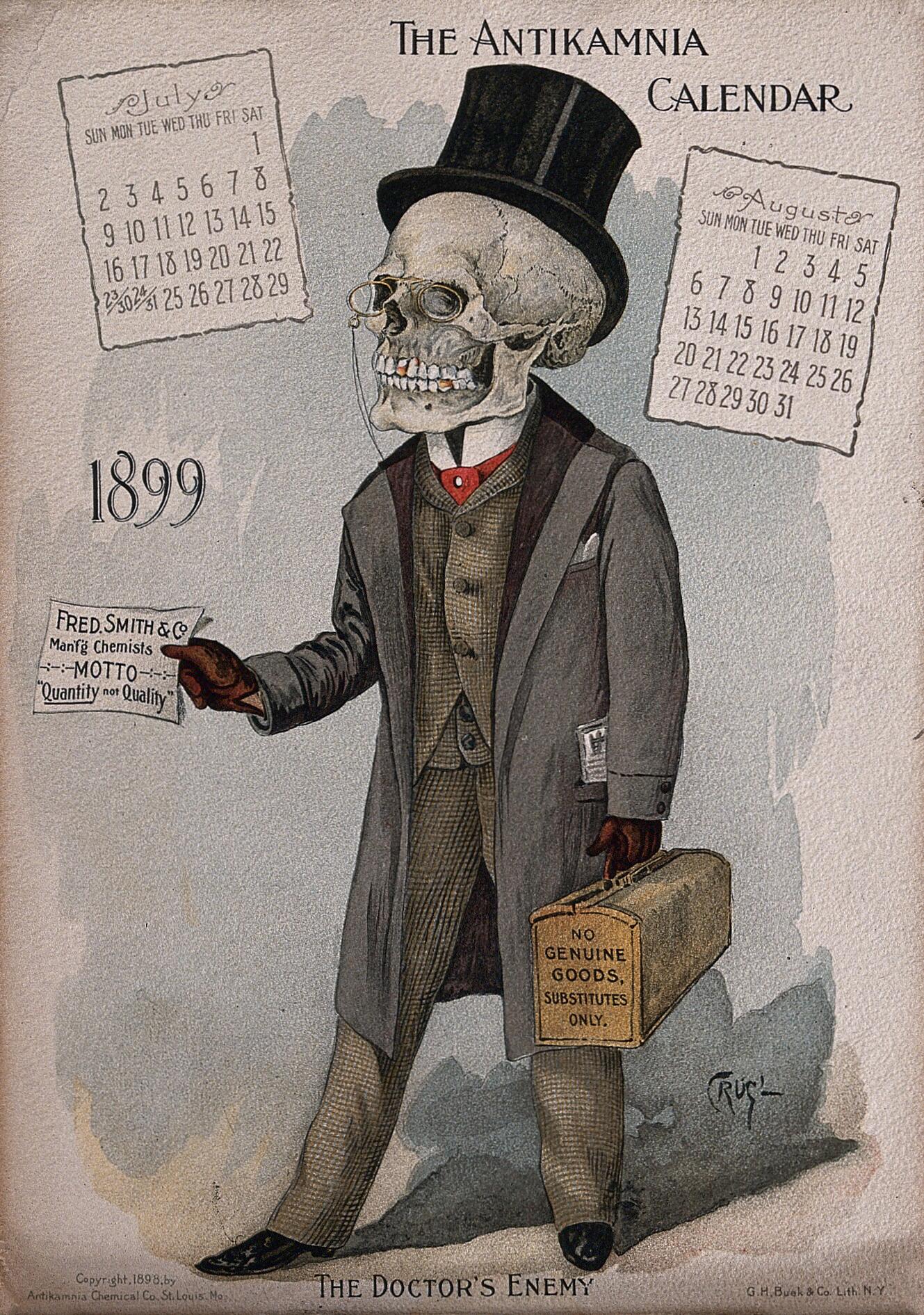
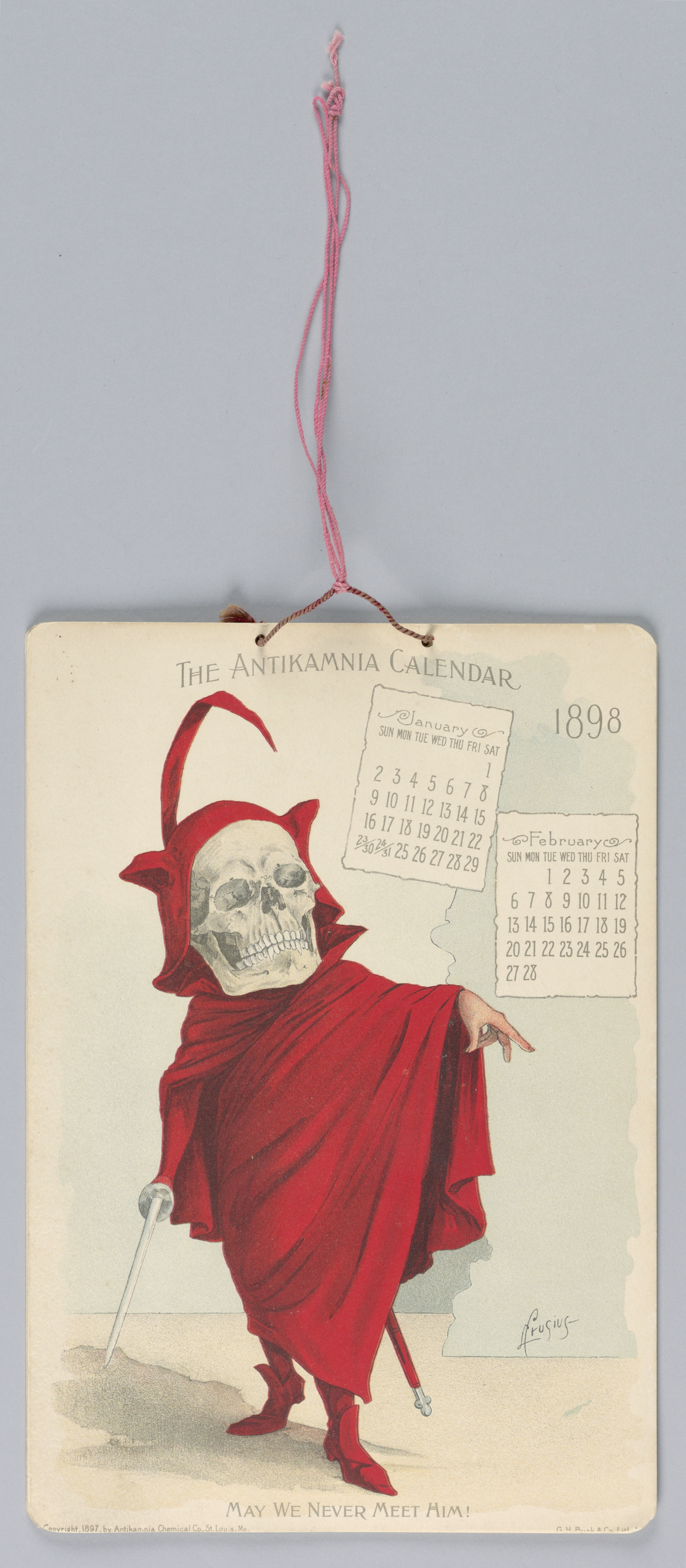
Via: Wellcome
Would you like to support Flashbak?
Please consider making a donation to our site. We don't want to rely on ads to bring you the best of visual culture. You can also support us by signing up to our Mailing List. And you can also follow us on Facebook, Instagram and Twitter. For great art and culture delivered to your door, visit our shop.

